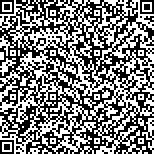Impacts of Urbanization on Temporal and Spatial Characteristics of Land Surface Temperature in Beijing
- Article
- Figures
- Metrics
- Preview PDF
- Reference
- Related
- Cited by
- Materials
Abstract:
By dividing Beijing into three plates indicating different urbanization levels according to the urbanization degrees, effects of Beijing urbanization on land surface temperature (LST) are analyzed with routine meteorological data and remote sensing products. (1) Impacts of urbanization on such features of LST as mean value of year, season, day, night, maximum and minimum are analyzed with the combination of meteorological data and the three plates. The results present that LST in three plates is all increasing from 1978 to 2006. In most conditions, mean LST calculated from the first plat is the biggest, and this from the third plat is smallest. (2) MOD13 and MOD11 products of 2001 and 2006 are used to study the effect of change in surface on LST during urbanization of Beijing. The results show that NDVI in 2006 is decreased by 51.3% compared to this in 2001 while day LST is increased by 73.74% and night LST is increased by 90.92%. (3) According to NDVI difference and day/night LST difference between 2006 and 2001 in Beijing, nine classes are extracted to present the change of LST with the change of NDVI. The classification result of NDVI difference and day LST difference shows that the percentages of the class presenting NDVI decreased while day LST increased in the three plates are 54.29%, 40.95% and 34% respectively. And the summary of the percentages of NDVI increased while day LST decreased and NDVI decreased while day LST increased is bigger than 50% in all three plates. The classification result of NDVI difference and night LST difference shows that the percentages of the class presenting NDVI decreased while night LST increased in the three plates are 51.67%、44.2% and 42.46%, which well explains the impact of surface change on LST during urbanization.
Keywords:
Project Supported:
Clc Number:


Mobile website









